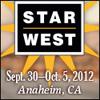 |
STARWEST 2012 Keynote: State-of-the-Art Cloud Testing: Experiences with Bing Search
Video
The cloud is penetrating every technology organization and almost every software product or service. The cloud affects everything inside development, bringing profound changes to how engineers build, test, release, and maintain software and systems.
|
Ken Johnston, Microsoft
|
 |
STAREAST 2012 Keynote: What Managers Think They Know about Test Automation—But Don’t
Video
Managers play a critical role in the success or failure of test automation. Although most testers and some test managers have a realistic view of what automation can and cannot do, many senior managers have firm ideas about automation that are misguided—or downright wrong.
|
Dorothy Graham, Independent Test Consultant
|
|
|
Software Testing Turnovers This paper was originally presented at an SQE STAR conference. It is offered here unedited in its original format.
|
Jeffrey S. Davis
|
|
|
Analyzing Web Application Errors This presentation focuses on the characteristics of Web application errors to derive key issues to consider in analyzing and reproducing errors. Learn how to isolate application errors from configuration and technical support issues. Explore effective techniques to make errors reproducible. Examples of common and uncommon Web application error types are provided.
|
Hung Nguyen, LogiGear Corporation
|
|
|
Internet Product Delivery: Creating Quality at the Speed of the Web Based on an operations perspective, Richard Martin shares his experiences with an e-commerce company in the areas of project planning, quality assurance, release management, and project delivery. Learn how the e-commerce market differs from other enterprise applications and which "best practices" make the most sense. Explore the most effective ways to manage change at Web speed.
|
Richard Martin, Calico Commerce
|
|
|
STAREAST 2001: Managing the End Game of a Software Project How do you know when a product is ready to ship? QA managers have been faced with this question for many years. Using the methodology discussed in this presentation, you take the guessing out of shipping a product and replace it with key metrics to help you rationally make the right decision. Learn how to estimate, predict, and manage your software project as it gets closer to its release date. Learn how to define which metrics to track--and how to measure them. Discover how to define the ratings scale for each metric and how to create a spider chart for product readiness. This presentation is a must for any individual or organization that is serious about maximizing the results of positive events and minimizing the consequences of adverse ones.
|
Mike Ennis, BMC Software
|
|
|
Release Criteria: Defining the Rules of the Product Release Game How do you know when you're finished testing? How do you know when the product is ready to ship? Sometimes the decision to stop testing and release a product seems as if someone's making deals in a smoke-filled room, or that there are rules of the game of which we are unaware. At times, these rules seem completely arbitrary. Instead of arbitrary decisions, it is possible to come to an agreement about when the product is ready to release, and even when it's time to stop testing. In this presentation, learn how to define release criteria, and then use those criteria to decide when to release the product.
|
Johanna Rothman
|
|
|
When Test Drives the Development Bus Once development reaches "code complete," the testing team takes over and drives the project to an acceptable quality level and stability. This is accomplished by weekly build cycles or dress rehearsals. The software is graded based on found, fixed, and outstanding errors. Development strives to increase the grades in each build--improving the quality and stability of the software. Learn how to use this "dress rehearsal" process to build team morale, develop ownership by the entire development team, and ensure success on opening night.
|
Cindy Necaise, MICROS Systems, Inc.
|
|
|
Thinking About People, Process, and Product: A Principle that Works at Work All projects involve the three P's: people, process, and product. People includes everyone who influences the project. Process is the steps taken to produce and maintain software. Product is the final outcome of the project. To keep these three in harmony, you must observe who is trying to do what to deliver what. Usually, two of the three P's are mandated, and the third one is chosen appropriately. Although this is common sense, it is not common practice. Dwayne Phillips discusses the issues and challenges that affect us all on every project. Learn about the ideas and questions to consider to help you work through these issues.
|
Dwayne Phillips, U.S. Department of Defense
|
|
|
Managing Concurrent Software Releases in Development and Test There is an ever-growing need to provide complex software products to customers on a short development schedule. Additionally, the customers need to be able to count on release dates for planning purposes. Instead of investing in an entirely new tool set that solves the configuration management issues associated with supporting concurrent development and support, existing tools can be used. This paper focuses on how to adapt and in some cases enhance an existing set of well-known tools to enable Lucent to excel in the market place. To this end, this project chose to implement the Fixed Interval Feature Delivery (FIFD) model of software development.
|
David Shinberg, Lucent Technologies
|

